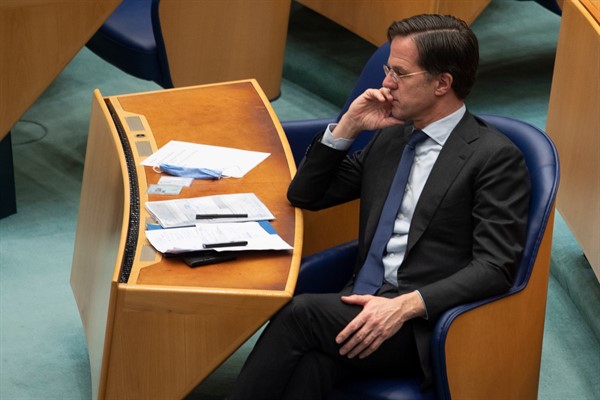It was exactly two weeks ago when my column about the Dutch election proclaimed Prime Minister Mark Rutte the “clear winner,” after leading his Party for Freedom and Democracy, or VVD, to a comfortable victory the previous week in an otherwise muddled race. In the wake of a VVD election campaign successfully centered on him, Rutte looked like he stood on solid ground, unquestionably the most powerful politician in the Netherlands, a decade after taking the top job. He was strongly positioned to form a new government and easily hold the job until next summer, when he would become the country’s longest-serving prime minister.
That was all true at the time. But within days, the ground started cracking under Rutte’s feet. In a spectacularly unexpected reversal of fortune, Rutte has suddenly found himself in the grips of a very Dutch scandal, fighting for his political life.
It’s hard for outsiders to grasp why, exactly, the Dutch finally scraped the scandal-proof coating from “Teflon Mark.” After multiple, arguably far more important failings, Rutte came under withering attack after he falsely denied planning to sideline one of his political nemeses during talks on forming a new coalition government: critical Christian Democrat lawmaker Pieter Omtzigt, who has frequently questioned Rutte’s government policies in parliament. It was Omtzigt who helped expose the child welfare fraud scandal that led to Rutte’s previous government resigning in January and forcing the March elections.

